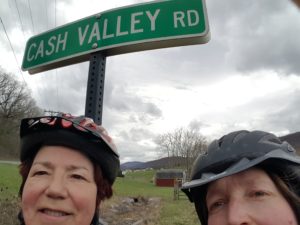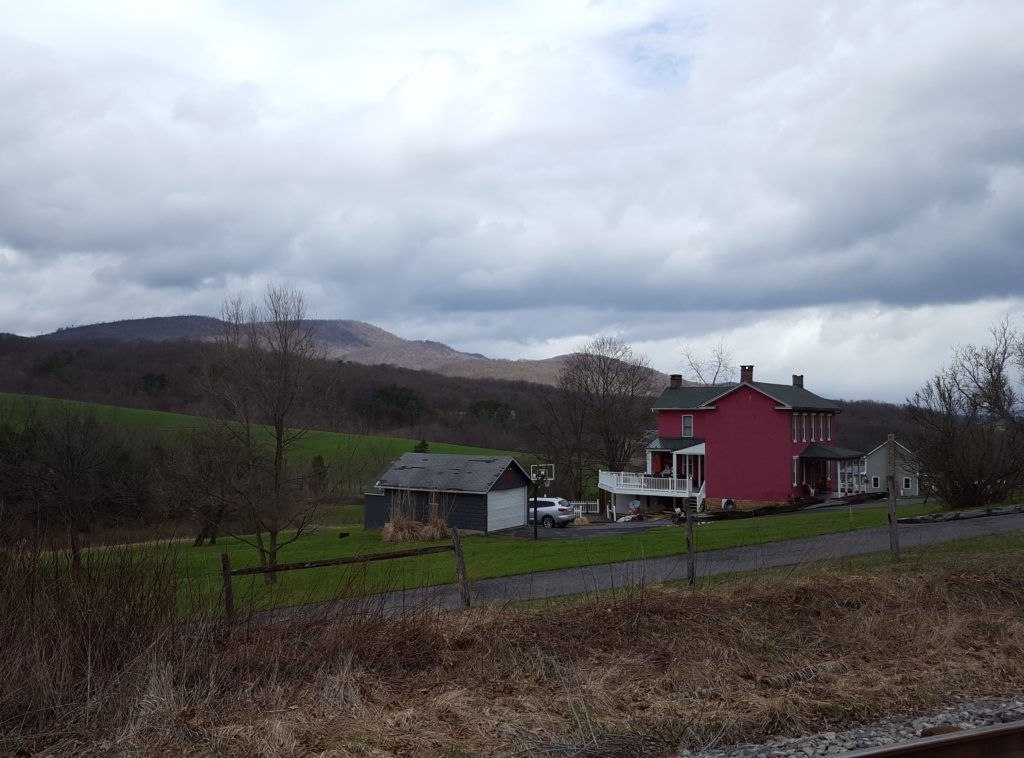 I have no doubt the homeowners along Cash Valley Road are mighty sick of people asking them how their road got its name. This sign stood right at the GAP Trail intersection, so of course Angela and I stopped to snap a few photos.
I have no doubt the homeowners along Cash Valley Road are mighty sick of people asking them how their road got its name. This sign stood right at the GAP Trail intersection, so of course Angela and I stopped to snap a few photos.
It appeared to be a fertile valley, so perhaps, I speculated, the people here had done very well with farming?

A little farther up the mountain, we happened upon a victim to ask, an elderly man out walking the trail. He paused and leaned against a fence, hands in his pockets like he had all day, presumably to let us pass.
Only we didn’t. We stepped down off our bikes, greeted him and exchanged pleasantries. When I said I was from Seattle, he said he’d been there a couple of times, the first time during the war when he’d shipped out of Bremerton. Quite a few people I’ve met know the Northwest via military service, via McChord Air Force Base in Tacoma, say, or the Naval Station at Bremerton.
“So, what’s the story behind Cash Valley?” I couldn’t resist asking.
“Oh, it’s a long one,” he said. “I can’t remember the specifics. There was a rumor someone buried cash here, and people kept returning to dig for it. I don’t know if they ever found it or not.”
Ah. This must have been a common story along the wilderness road. In the book The Old Pike: A History of The National Road with Incidents, Accidents, and Andecdotes Thereon (1894) by Thomas A. Searight, I came across the following:
It was reported in Ohio that there was a box of money hid on the old Gaddis farm, near the old pike, about two miles west of Uniontown, [PA] supposed to have been hid there by Gen. Braddock. It was sought for but never found.
General Braddock would have been in Uniontown circa 1755, so that money’s been hidden away for centuries. Angela and I expect to pass Uniontown in the next couple of days. Perhaps we should stop and buy a shovel?
